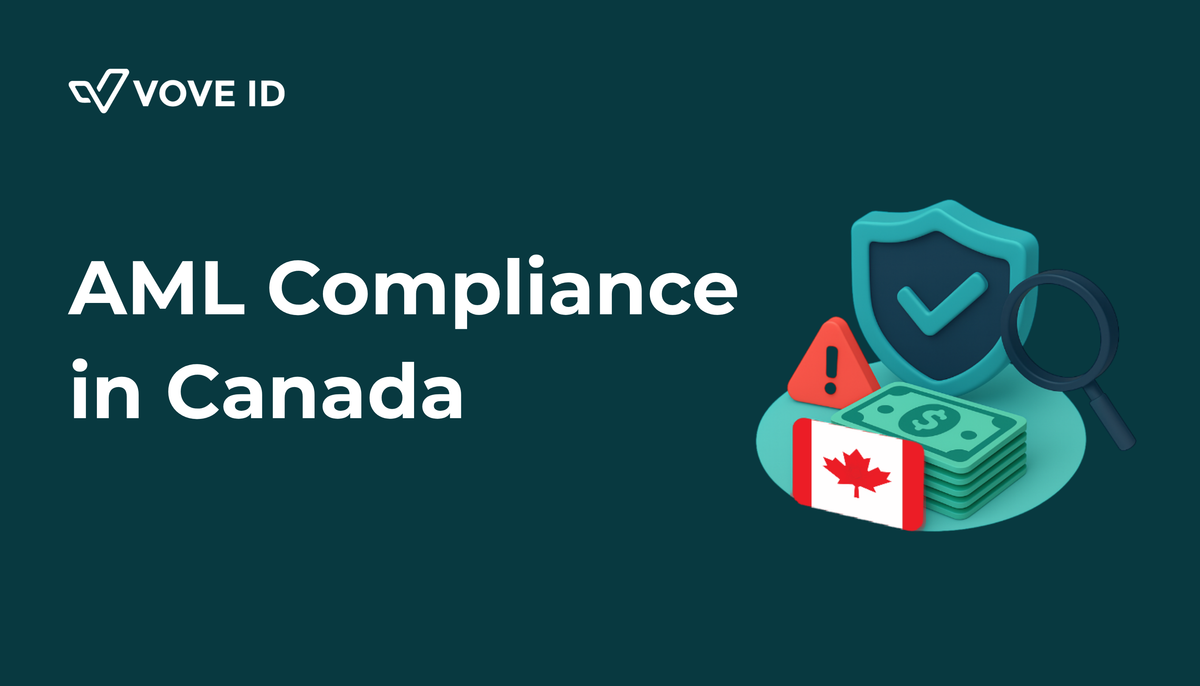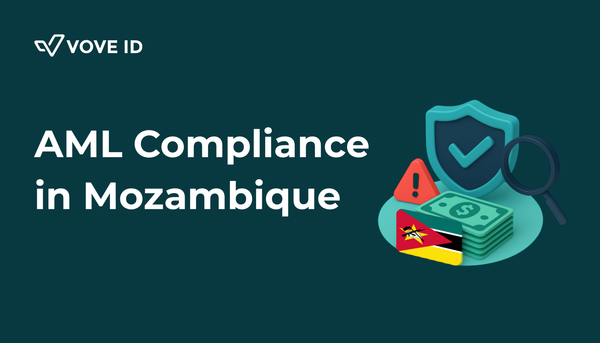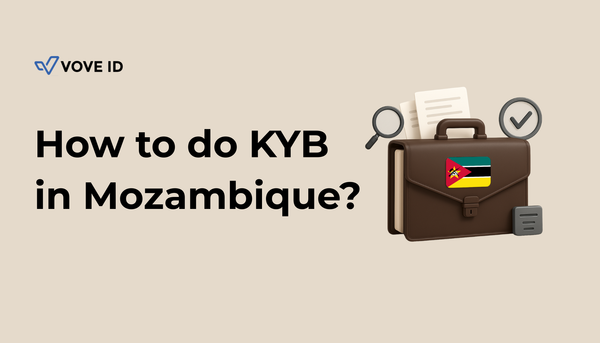Navigating Canadian AML Regulations in 2025: A Comprehensive Compliance Guide
Explore Canada’s updated AML regulations in 2025, including the Strong Borders Act, FINTRAC requirements, and penalties. Learn how eKYC Canada solutions like VOVE ID help businesses ensure compliance and mitigate financial crime risks.

Introduction
Canada’s anti-money laundering (AML) framework has evolved significantly in 2025, driven by stringent regulations and robust enforcement. These updates, anchored by the Strong Borders Act (Bill C-2), are critical for financial institutions, fintechs, and businesses, particularly Canadian firms operating in high-risk regions like MENA and East/West Africa, where cross-border transactions are growing. With rising penalties and advanced monitoring tools, compliance is a business imperative. This guide explores the 2025 AML landscape, enforcement trends, and solutions like eKYC Canada and identity verification solutions in Canada to ensure adherence in this dynamic market.
Strengthened Canadian AML Regulatory Framework
On June 3, 2025, Canada enacted the Strong Borders Act (Bill C-2), reshaping Canadian AML regulations under the Proceeds of Crime (Money Laundering) and Terrorist Financing Act (PCMLTFA). Key amendments include:
- Harsher Penalties: The Act introduces administrative monetary penalties (AMPs) of CAD 40,000 for minor violations, CAD 4 million for serious violations, and CAD 20 million for very serious violations, capped at CAD 20 million or 3% of global revenue. Criminal fines range from CAD 2.5 million to CAD 20 million, with up to 7 years’ imprisonment for severe offenses.
- Expanded Reporting Entities: Factoring, financing, and leasing companies join banks, credit unions, and money services businesses (MSBs) as reporting entities. They must implement customer due diligence Canada protocols, maintain records, and report suspicious transactions to FINTRAC.
- Mandatory FINTRAC Enrollment: All reporting entities must register with FINTRAC, with thousands of new entities, including non-traditional sectors, enrolling in 2025.
Enhanced Enforcement and Monitoring
Canada has bolstered enforcement to ensure compliance with Canadian AML regulations:
- Increased Penalties: Providing false information to FINTRAC can lead to criminal charges, with up to 7 years’ imprisonment, emphasizing accurate reporting.
- FINTRAC Scorecard System: Launched in 2025, this system provides real-time feedback on transaction reporting and KYC adherence, helping institutions address gaps.
- Compliance Monitors: For major violations, FINTRAC appoints independent monitors. In 2025, 18 institutions, including fintechs, underwent monitor-led audits.
Key Regulatory Amendments
The 2025 updates address risks in digital and cross-border finance:
- Crowdfunding Platforms and Payment Service Providers (PSPs): These platforms, including those handling cryptocurrencies, must report transactions over CAD 10,000 and conduct KYC checks using eKYC Canada solutions.
- Sanctioned Property Reporting: Entities must report dealings with assets linked to sanctioned individuals under the United Nations Act or Special Economic Measures Act.
- Virtual Asset Service Providers (VASPs): Crypto exchanges face enhanced due diligence for transactions over CAD 1,000, aligning with Financial Action Task Force (FATF) standards.
Enforcement Actions: Lessons from 2025
Recent cases highlight non-compliance risks:
- TD Bank (2024): Fined CAD 4.2 billion in the U.S. for AML failures, with Canadian operations implicated, underscoring the need for robust systems.
- Binance Canada (2025): Fined CAD 6 million for operating as an unregistered MSB and failing to report crypto transactions.
- Caisse Populaire Alliance Limitée (2025): Received a CAD 1.2 million AMP for inadequate KYC and reporting failures.
Sector Spotlight: Fintech and Crypto Exchanges
Canada’s fintech sector, including crypto exchanges and digital payment platforms, is a key driver of financial innovation, with over 700 fintechs operating in 2025. These platforms are prime targets for money laundering due to their speed and anonymity. To comply, fintechs must:
- Secure Licenses: FINTRAC requires robust AML frameworks for licensing.
- Build Trust: Compliance reassures investors and partners, critical for Canada’s CAD 1.7 trillion economy.
- Enable Global Partnerships: Adhering to FATF standards facilitates cross-border collaborations, especially in MENA and East/West Africa, where Canadian fintechs are expanding to serve growing digital economies.
Emerging Trends and Technologies
Technology is reshaping Canadian AML regulations:
- AI and Machine Learning: FINTRAC’s 2025 AI pilot identified 20% more suspicious transactions than manual reviews, enhancing customer due diligence Canada.
- Blockchain Analytics: Tools trace cryptocurrency flows, critical for VASPs and PSPs.
- Biometric KYC: Facial recognition speeds up onboarding by up to 40%, meeting AML requirements.
Practical Steps for AML Compliance
To succeed in Canada’s 2025 AML landscape, businesses should:
- Know Your Obligations: Study PCMLTFA and FINTRAC guidelines to understand reporting and KYC requirements.
- Conduct Risk Assessments: Tailor AML programs to customer profiles, product risks, and geographic exposure, especially for MENA and East/West Africa operations.
- Adopt eKYC Tools: Use platforms like VOVE ID for biometric verification and watchlist screening to meet FINTRAC standards.
- Train Staff: Provide regular AML/CFT training for compliance officers and frontline teams.
- Monitor Transactions: Deploy AI-driven tools to detect suspicious patterns, such as rapid cross-border transfers.
- Report Promptly: File Suspicious Transaction Reports (STRs) with FINTRAC immediately to avoid penalties up to CAD 20 million.
What businesses must register with FINTRAC? All PCMLTFA reporting entities, including banks, fintechs, factoring companies, and VASPs, must register and renew periodically.
How can eKYC Canada tools reduce AML risk? Solutions like VOVE ID automate identity verification and sanction screening, minimizing errors and ensuring compliance.
Conclusion
Canadian AML regulations in 2025 demand vigilance and investment in compliance infrastructure. The Strong Borders Act, expanded reporting requirements, and aggressive enforcement reflect Canada’s focus on financial transparency. For firms operating in high-risk regions like MENA and East/West Africa, identity verification solutions in Canada and eKYC Canada tools like VOVE ID streamline KYC/KYB processes, ensuring compliance and mitigating financial crime risks.
Call to Action
- Conduct a Compliance Audit: Review AML policies against PCMLTFA requirements.
- Invest in Technology: Adopt eKYC Canada tools for efficient customer due diligence Canada.
- Stay Informed: Monitor FINTRAC updates and scorecard feedback.
Ready to strengthen your compliance with Canadian AML regulations? Book a demo with VOVE ID to automate KYC/KYB processes and keep your business secure in 2025 and beyond.




